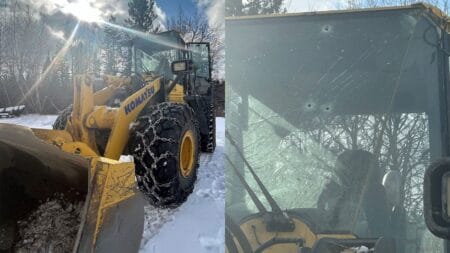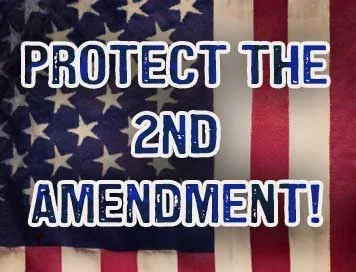By Andrew F. Branca

USA – -(Ammoland.com)- Jeanie L. sends in this week’s winning “Law of Self Defense Question of the Week”, via Twitter, when she writes:
“I’m clumsy with my little gun, keep it with me at home, but worry that carrying it an attacker would take it?”
On the surface, this might appear to be solely a tactical question – and it surely does touch upon important tactical issues – but it also has important legal implications that might not be immediately obvious.
First, a brief note on the tactical issues.
Carrying a gun is not for everyone, and doing so carries considerable tactical, legal, and moral responsibilities. Only you can decide if concealed carry is right for you, use your best judgment.
To make the most informed judgment, however, you’ll want to get some good tactical instruction on such issues as weapons retention and the meaning of “tactical contact distance.” As anyone who has taken a weapons retention class will tell you, an attacker within contact distance can readily strip a defender of their outstretched handgun. Indeed, I’ve seen prison video footage of inmates practicing weapons stripping techniques with each other.
Like all risks in life, however, this one can be mitigated. A good instructor can teach you how to shoot from a “retention position,” in which the gun is not extended at arms length, but kept tucked in close to the body. This greatly complicates any effort to take the gun from you.
It’s also important to understand what we mean, in a tactical sense, by “contact distance.” That’s not merely the distance within which a threatening bad guy can touch you in this instant, but rather the distance in which he could touch you before you could deploy defensive measures.
The best way to explain this tactical context of “contact distance” is through the Tueller Drill. This drill was developed by (now retired) police officer Dennis Tueller . (Dennis is currently a board member of the Armed Citizen Legal Defense Fund, of which I myself am a lawyer member.) He conducted real-life experiments to determine the distance an attacker could close before a defender could draw and engage that attacker with defensive fire.
It turns out that a typical time to draw and fire is 1.5 seconds. In that same time an attacker can usually cross a distance of 21 feet. That means that from a tactical perspective, a knife-wielding attacker who is closer to you than 21 feet is effectively within contact distance if your weapon is still holstered—that is, he can mortally strike you before you can defend yourself with your sidearm. Alternatively, he could close the same distance and try to seize your gun in the same time span.
And that brings us to the legal implications of your question.
Any use of deadly force in self-defense requires that your conduct abide by all five fundamental principles of the law of self-defense – innocence, imminence, proportionality, avoidance, and reasonableness.
Among these is “imminence,” the requirement that the deadly force threat you’re facing is about to occur right now.
Absent knowledge of the Tueller Drill, we might have only the vaguest notion of when a knife or bat-wielding attacker might present an imminent threat. Clearly, if he’s standing next to you, he can strike instantly. On the other hand, if he’s 100 feet away, not so much.
So, how far is too far away to be a threat? How close is close enough to justify an immediate defensive response, because delay exposes you to mortal injury?
The Tueller Drill provides valuable tactical guidance. If you know you can draw and engage an “attacker” (target) consistently in 1.5 seconds, then you have a gauge of how close an attacker can come before you need to take affirmative defensive steps. That step need not be to draw and fire, necessarily, but perhaps merely to place your hand on the gun, to draw to a low ready position, to align the sights on the attacker – any of those intermediary steps will greatly reduce the amount of additional time you would need to make a definitive defensive response.
What does any of that have to do with weapons retention? Well, obviously the bad guy can’t take your gun until he’s within contact distance. If you can keep him outside that distance, by means ranging from no defensive force to verbal commands to deadly defensive force, as circumstances warrant, then the attacker’s ability to take you gun is rather severely reduced.
Or, as Clint Smith of Thunder Ranch has been known to remark, “The bad guy might take my gun from me . . . but it’s going to be empty.”
Importantly, not only does the Tueller Drill act as a concrete tool for making real-time tactical decisions, it also serves as a framework around which you and your lawyer can build your “compelling narrative of innocence” – the explanation you will give to the police, prosecutors, judge, and jury to justify your use of deadly force. In other words, the key to staying out of jail.
Why, they may ask, did you shoot that knife-wielding attacker when he was still 10 feet away? Now you have a robust rationale – the same rationale, by the way, that they’d hear from any police officer faced with a similar scenario.
There’s another legal aspect to an attacker attempting to seize a defender’s gun. If you were facing a determined attacker, and he was reaching for a handgun on a table beside him, you would (all other elements of self-defense being met) be entitled to engage him with defensive deadly force before he had actually secured the gun. You are not required to wait until he grabs it, or points it, or fires it.
Well, if the bad guy is trying to take your gun away from you, it’s really no different than if he were reaching for a gun on a table. In fact, his act in trying to take your gun is actually a greater justification for engaging with defensive deadly force – if he takes your gun he has simultaneously armed himself AND disarmed you. You are not required to wait until he touches your gun before you can engage with deadly defensive force, if you reasonably believe he intends to disarm you.
Because Jeanie L’s tweet was selected as this week’s “Law of Self Defense: QOTW,” she is being sent a free autographed copy of “The Law of Self Defense, 2nd Edition” ( https://tiny.cc/0ob18w ) .
If you’d like to submit your own question for consideration as a “Law of Self Defense QOTW,” simply tweet or DM it to me @LawSelfDefense (no “of”). If your question is selected, you too will receive a free autographed copy of “The Law of Self Defense”.
For the rest of you whose questions were not selected, you can also obtain a copy of “The Law of Self Defense, 2nd Edition,” using any of the order methods described below. (Maybe even two copies.)
–Andrew, @LawSelfDefense
About Andrew F. Branca
Andrew F. Brancais an MA lawyer and the author of the seminal book “The Law of Self Defense, 2nd Edition,” available at the Law of Self Defense blog, Amazon.com (paperback and Kindle), Barnes & Noble (paperback and Nook), and elsewhere.
In addition to the book, Andrew also conducts Law of Self Defense Seminars all around the country. Seminars for 2014 are currently being scheduled, if you’d like to see one held in your area fill out the comment box on the LOSD Seminar review page, where you can also see reviews of recently completed seminars in New Hampshire, Maine, Texas, Massachusetts, Ohio, Virginia, Florida, South Carolina, Georgia, and elsewhere.
Andrew is also a contributing author on self defense law topics to Combat Handguns, Ammoland.com, Legal Insurrection, and others.
You can follow Andrew on Twitter at @LawSelfDefense and using #LOSD2, on Facebook, and at his blog, The Law of Self Defense.






